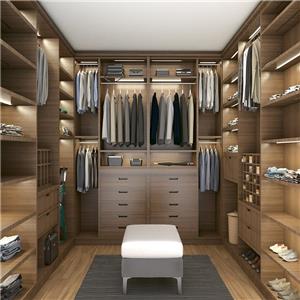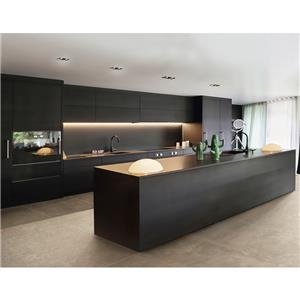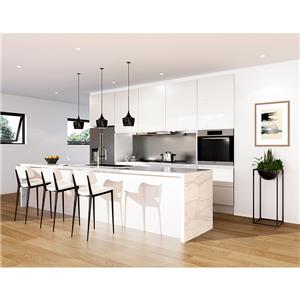What is the best finish for kitchen cabinets - 10 types of kitchen cabinet finishes you must know
What is the best finish for kitchen cabinets - 10 types of kitchen cabinet finishes you must know
Determining the best finish for kitchen cabinets involves considering various factors, such as your style preferences, the desired level of durability, and the amount of maintenance you're willing to invest. Here, we'll explore some popular finishes and their characteristics to help you make an informed decision:
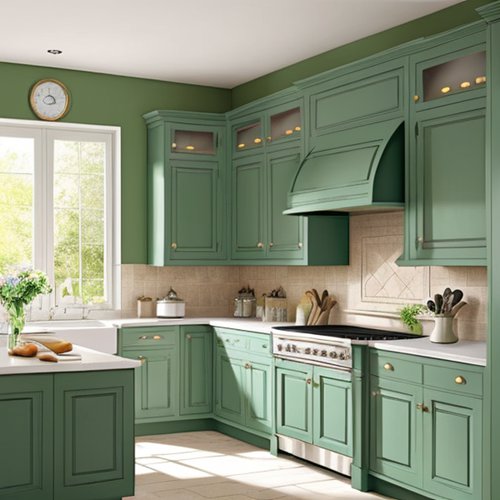
1. Painted Finish: A painted finish offers versatility in terms of color options, allowing you to match or contrast with your kitchen's overall aesthetic. It provides a smooth and clean appearance that can instantly transform the look of your cabinets. Painted cabinets are generally easy to clean, but they may require periodic touch-ups as signs of wear and tear become visible over time.
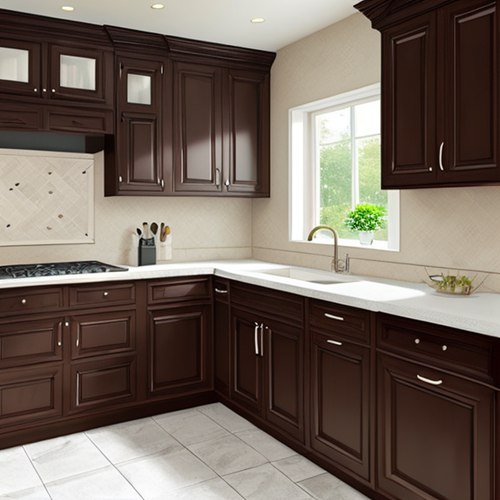
2. Stained Finish: Stained cabinets showcase the natural beauty of the wood grain, adding warmth and depth to your kitchen. Stains come in various shades, enabling you to achieve the desired color tone. This finish requires periodic maintenance, such as applying a fresh coat of stain or refinishing, to preserve its appearance and protect the wood.
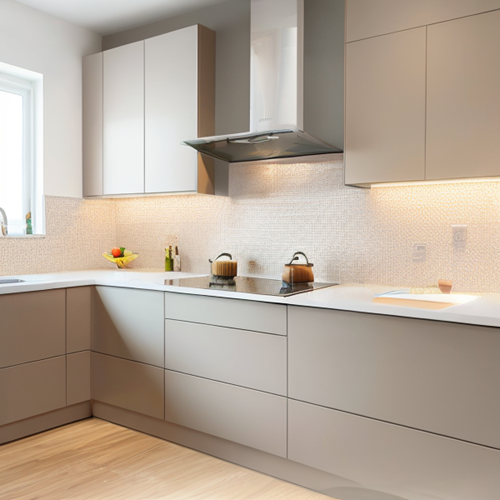
3. Laminate Finish: Laminate cabinets feature a synthetic surface that is highly durable, resistant to moisture, stains, and fading. They are available in an extensive range of colors and patterns, including realistic wood grain imitations. Laminate cabinets are relatively low-maintenance and easy to clean, making them a practical choice for busy kitchens.

4. Veneer Finish: Veneer cabinets consist of a thin layer of real wood applied to a plywood or particleboard base. They offer the natural beauty of wood at a more affordable price point. Veneer cabinets can be stained or painted to achieve the desired look. However, they may require proper care to avoid damage, such as avoiding excessive exposure to moisture or heat.

5. Natural Wood Finish: Natural wood cabinets exude timeless beauty and warmth. A clear coat or protective sealant can enhance the wood's natural color while providing an added layer of protection against moisture and stains. Maintaining natural wood cabinets involves regular cleaning and periodic refinishing to preserve their appearance and durability.
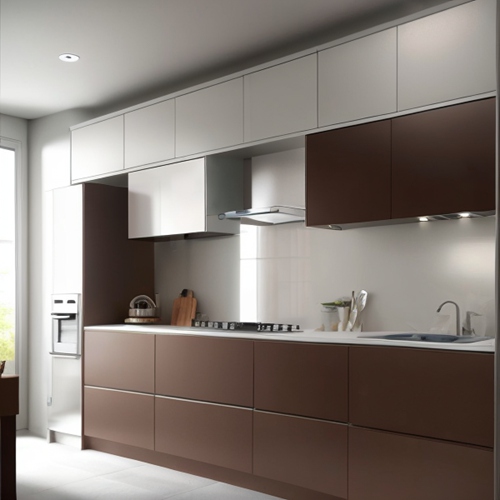
6. Glazed Finish: A glazed finish involves applying a glaze over a base paint or stain to create a subtle layer of color and depth. This finish adds a touch of elegance and can highlight the intricate details of cabinet doors and drawers.
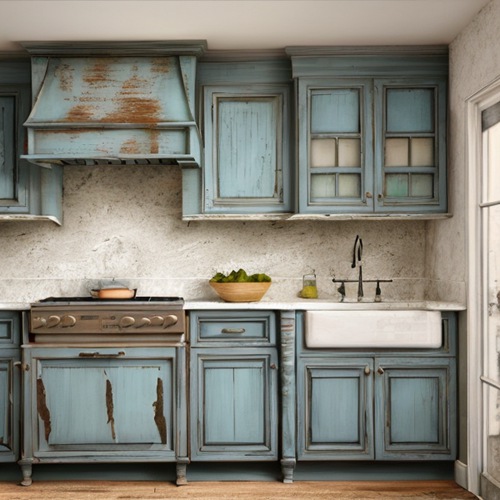
7. Distressed Finish: A distressed finish gives cabinets a vintage or rustic look by intentionally creating marks, dents, and wear on the surface. This technique adds character and charm to the cabinets, making them appear aged or weathered.
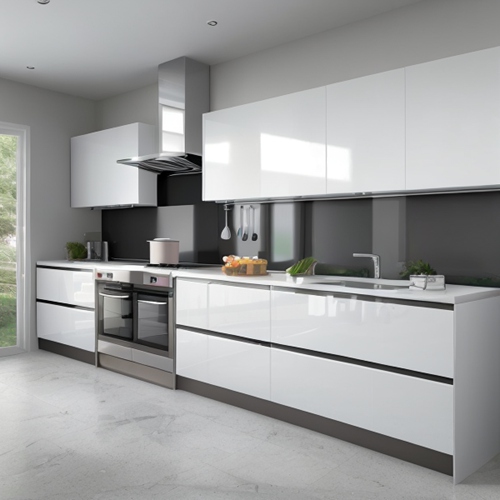
8. High-Gloss Finish: A high-gloss finish creates a sleek and contemporary appearance, providing a reflective and shiny surface. This finish is achieved through multiple layers of glossy paint or lacquer, adding a modern touch to the kitchen.
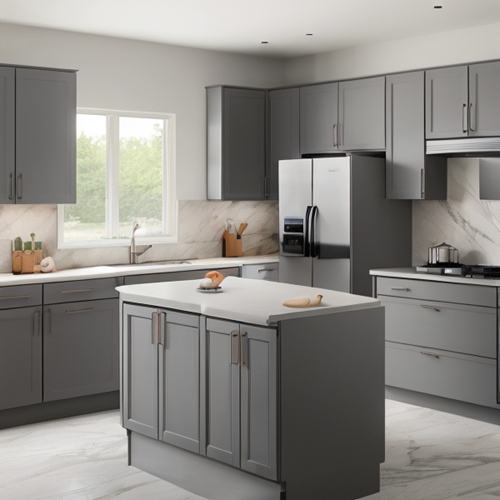
9. Satin or Matte Finish: A satin or matte finish offers a subtle sheen or a flat appearance, respectively. These finishes are popular for their ability to hide fingerprints, smudges, and scratches, making them ideal for high-traffic kitchens or those seeking a more understated look.
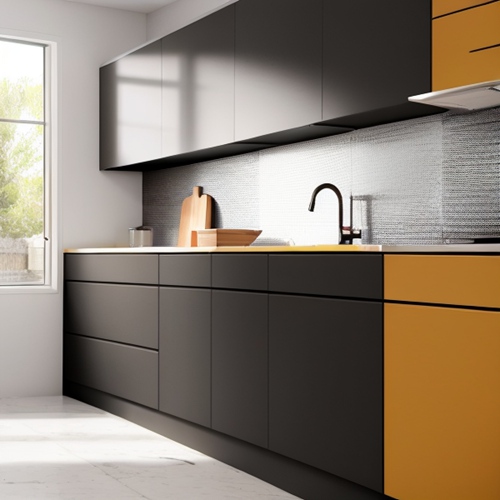
10. Two-Tone Finish: A two-tone finish involves using different colors or finishes for the upper and lower cabinets or incorporating contrasting elements within the cabinetry design. This approach adds visual interest and creates a unique and personalized look for your kitchen.
Remember, each type of finish has its own distinct characteristics and visual appeal. Consider the overall style and atmosphere you want to create in your kitchen, as well as the compatibility with other design elements, when selecting the best finish for your cabinets.
When selecting the best finish for your kitchen cabinets, consider your style preferences, the overall design of your kitchen, and the practical aspects of maintenance and durability. Additionally, consulting with professionals or kitchen designers can provide valuable insights and guidance tailored to your specific needs. Ultimately, finding the perfect finish will help create a stunning and functional kitchen space that reflects your personal taste and stands the test of time.
FAQ:
1.What is the best finish for cabinet interiors?
The best finish for cabinet interiors depends on personal preference, budget, and the intended use of the cabinets. Some popular options include:
-
Melamine: A cost-effective, durable, and easy-to-clean option often used in kitchen cabinets.
-
Pre-finished plywood or MDF: Provides a smooth and consistent finish that is resistant to wear and tear.
-
Painted: A customizable finish that can match the color scheme of the room or add a pop of color to the cabinets' interior.
-
Unfinished wood: Allows for a natural and rustic look while providing the option to stain or finish the wood to preference.
Ultimately, the best finish for cabinet interiors will depend on individual needs and goals for the space.
2.Is Matt or gloss better for kitchen cabinets?
Choosing between a matt or a gloss finish for kitchen cabinets is mostly a matter of personal preference. Both finishes have their advantages and disadvantages.
A matt finish is more forgiving and less likely to show scratches, fingerprints, or dirt. It also tends to give a more natural and understated look to the cabinets. However, it might require more maintenance than a gloss finish, as it can be less resistant to stains and moisture.
A gloss finish, on the other hand, provides a sleek and modern look that can make the cabinets stand out and reflect light better. It is also generally easier to clean and more resistant to moisture and stains than a matt finish. However, it can be more revealing of scratches, fingerprints, or imperfections.
Ultimately, whether you choose a matt or gloss finish for your kitchen cabinets will depend on your personal style and preferences, as well as the overall look and feel of your kitchen.
3.What cabinet finish is easiest to clean?
A cabinet finish that is easiest to clean is one that is smooth, non-porous, and non-absorbent. This type of finish prevents dirt, grease, and food particles from penetrating the surface, which makes it easier to wipe away with a damp cloth. Some of the easiest finishes to clean are:
-
Melamine: This finish is made of a durable synthetic material that is resistant to scratches, stains, and moisture. It is also easy to clean with a mild detergent and a damp cloth.
-
Gloss: Glossy finishes are relatively easy to wipe down with a cloth or sponge. It is because of its smooth, non-porous texture that makes it resistant to stains and dirt.
-
Painted: A painted surface can often be cleaned by using a clean cloth and mild soap and water solution. However, it's important to avoid using abrasive cleaners or sponges that can be harmful to the finish.
Overall, it is best to avoid finishes that are rough or textured as they tend to trap dirt and grime. Instead, opt for a smooth and non-porous finish that is easy to wipe clean.
4.What finish do professional cabinet makers use?
Professional cabinet makers use a variety of finishes depending on the client's preferences, budget, and intended use of the cabinets. Some of the most popular finishes used by professional cabinet makers include:
-
Lacquer: A clear, high-gloss finish that is durable and easy to maintain. It is often used to give cabinets a modern and contemporary look.
-
Conversion Varnish: A high-quality finish that provides excellent protection against scratches, stains, and fading. It is often used in kitchens and other high-use areas.
-
Pre-Catalyzed Lacquer: A fast-drying and hard-wearing finish that provides good protection against moisture, chemicals, and abrasions. It is often used in commercial and industrial applications.
-
Oil-Based Paint: A durable and long-lasting finish that provides excellent resistance to wear and tear. It is often used in traditional or vintage-style cabinetry.
-
Water-Based Finish: A non-toxic and eco-friendly finish that provides excellent durability and protection against moisture. It is often used in modern and contemporary cabinetry.
Ultimately, the finish used by professional cabinet makers will depend on the client's needs and preferences, as well as the style and functionality of the cabinets.


